Inefficiencies in packaging often arise not from major equipment failures, but from repetitive tasks, inconsistent alignment, or manual strapping that slows production and increases the risk of product damage. These minor setbacks can limit throughput and escalate labor costs.
Banding machines offer a simplified solution. By automating the strapping process, they reduce manual handling, speed up line operations, and ensure consistent packaging quality. For small to mid-size packaging lines, choosing the right banding machine can transform productivity, reduce waste, and improve workplace ergonomics.
This guide outlines how to identify the top banding machines for small- to mid-size packaging lines, comparing features, types, and applications to achieve optimal results.
Key Takeaways:
- Banding machines automate repetitive strapping tasks, saving time and labor across packaging stations.
- Machine capacity, band width, and tension settings must align with your product size and weight to prevent strap breakage or product damage.
- Power types vary: semi-automatic machines suit moderate volumes, while fully automatic versions handle high-speed, continuous operations.
- Safety and ergonomic features, including adjustable guides and foot-operated controls, reduce operator fatigue and injury risks.
- Investing in banding machines improves throughput, ensures consistent product presentation, and enhances ROI for small to mid-size lines.
To understand their impact, consider how banding machines handle packaging differently from manual methods.
How Banding Machines Improve Packaging Efficiency?
Banding machines automate the process of wrapping a band, usually polypropylene (PP) or polyester (PET), around products or bundles, ensuring they are secure for storage, handling, or shipment.
Compared to manual strapping, these machines deliver higher speed, precision, and uniformity, which is critical for modern and efficient packaging operations.
Key applications include:
- Small batch packaging for retail stores, e-commerce fulfillment centers, and subscription boxes, where speed and consistency matter.
- Bundling multiple cartons or products on pallets simplifies transport and reduces shifting during shipment.
- Securing fragile or irregularly shaped items without causing damage, thanks to adjustable strap tension and cushioning options.
- Standardizing packaging quality across multiple production lines, ensuring each package meets the same safety and presentation standards.
To ensure efficient packaging, John Maye Company offers expert guidance, a wide range of strapping and banding equipments, and can help you select banding machines that improve workflow, maintain consistent strap tension, and protect products. Contact our team to discuss the solution that fits your packaging needs.
Why Modern Banding Machines Increase Efficiency and Productivity?
When it comes to balancing efficiency and adaptability, traditional manual strappers fall short. Modern banding machines, however, offer greater versatility:
- Easily movable across workstations to match shifting production needs.
- Adjustable strap tension and width to handle different product sizes.
- Ergonomic designs that reduce operator fatigue and streamline workflow.
For operations where space, labor efficiency, and product safety are key, investing in a banding machine quickly pays off through time savings and less material waste.
3 Types of Banding Machines
Before investing in equipment, it’s important to understand how different machines impact workflow, efficiency, and product handling. Evaluating the types of top banding machines for small to mid-size packaging supplies helps you choose the best fit for your operation and ensures consistent performance.
The following are the main types of top banding machines for small to mid-size packaging lines.
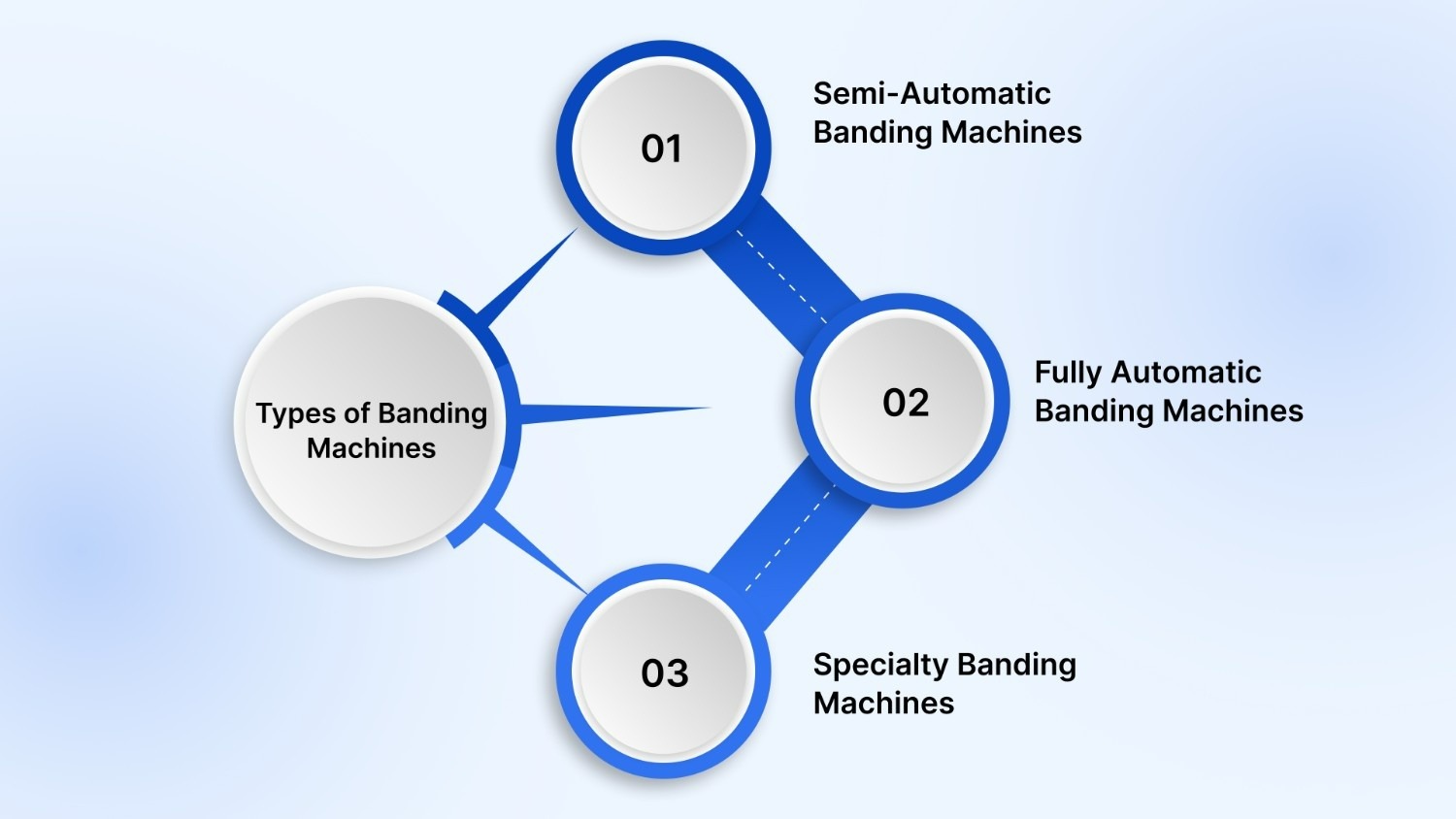
1. Semi-Automatic Banding Machines
These machines require manual placement of products into the strap loop. They are ideal for moderate production volumes, offering consistent tension and fast strapping without complex setup.
2. Fully Automatic Banding Machines
Fully automatic machines feed, tension, and cut the strap independently. Designed for high-speed, continuous operations, they reduce operator intervention and increase throughput.
3. Specialty Banding Machines
Customizable options provide workflow flexibility:
- Rotary tables for circular products or bundles
- Conveyor-mounted units for inline packaging
- Multi-band systems to bundle multiple items simultaneously
Understanding these types ensures your packaging line runs efficiently while maintaining product quality and consistency.
Also Read: Best Pallet Wrapping Machines for Manufacturing Plants 2025
With a clear understanding of types and applications, the next step is identifying specific models.
8 Top Banding Machines for Small to Mid-Size Packaging Lines
These models balance speed, versatility, and ease of use, making them ideal for mid-volume packaging or businesses with changing product sizes:
For dependable packaging performance, John Maye Company works with you to match the right equipment to your line’s capacity and workflow
Also Read: Best Mini Conveyors for Small Warehouses
Key Considerations Before Buying a Banding Machine
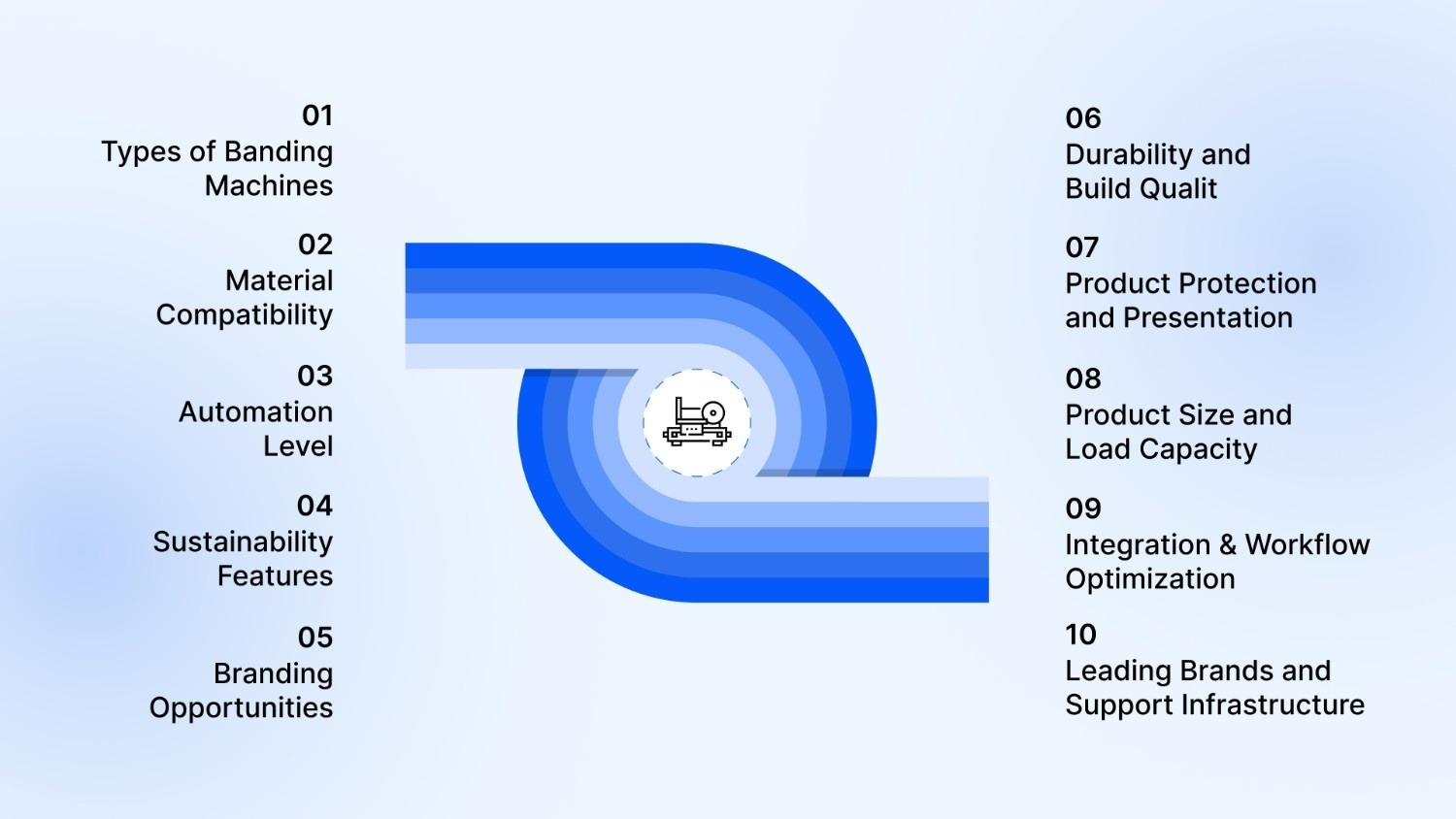
When it comes to packaging efficiency, selecting the right banding machine can make a significant difference. Top banding machines for small to mid-size packaging lines not only secure products but also improve workflow, reduce labor strain, and maintain product quality.
Understanding the key factors before investing ensures that the machine fits your production needs and delivers long-term value.
Consider the following factors when evaluating top banding machines for small to mid-size packaging lines:
- Types of Banding Machines: Semi-automatic, automatic, and fully automatic machines suit different product sizes and volumes, while manual or portable options provide flexibility for smaller operations.
- Material Compatibility: Ensure the machine handles the required band types safely, and consider eco-friendly options to reduce environmental impact.
- Automation Level: Machines with higher automation improve speed, consistency, and reduce labor requirements across packaging lines.
- Sustainability Features: Support for recyclable bands and minimal use of adhesives and plastics reduce packaging waste and contributes to sustainability goals.
- Customization and Branding Opportunities: Machines capable of applying printed or custom bands enable branding, traceability, and regulatory compliance without additional packaging.
- Durability and Build Quality: Robust materials and construction provide long-lasting performance, lifespan and minimize downtime in demanding environments.
- Product Protection and Presentation: Banding machines secure products without damage and maintain a professional, retail-ready appearance.
- Product Size and Load Capacity: Matching arch size and tension with product dimensions ensures safe handling of large or heavy items.
- Integration and Workflow Optimization: Machines that integrate with existing packaging lines and features like automated sorting enhance workflow efficiency.
- Leading Brands and Support Infrastructure: Choosing machines from John Maye Company with maintenance support and available spare parts ensures reliable operations.
Implementing top banding machines for small to mid-size packaging lines helps maximize efficiency, lower labor costs, and maintain product quality.
Safe Operation and Maintenance Tips for Banding Machines
Top banding machines for small to mid-size packaging lines deliver speed, consistency, and safety, but they come with operational considerations.
Capacity limits mean some machines may not handle extremely heavy bundles, and regular maintenance is essential to ensure reliable performance.
To achieve optimal results and long-term efficiency, follow these best practices:
- Train operators: Ensure staff understand proper strap tension, alignment, and machine operation to prevent errors and damage.
- Perform routine inspections: Check belts, rollers, and cutting mechanisms for wear and tear to avoid downtime.
- Follow load and strap specifications: Using the correct bundle size, strap type, and tension settings extends machine life and maintains secure packaging.
By addressing these considerations proactively, top banding machines for small to mid-size packaging lines can function as essential workflow enhancers, improving throughput, reducing errors, and improving safety across your packaging operations.
How Can John Maye Enhance Your Banding Operations?
Optimizing packaging goes beyond simple strapping. John Maye’s top banding machines for small to mid-size packaging lines deliver speed, safety, and consistency, transforming your workflow:
- Improved efficiency: Automate repetitive strapping tasks to reduce delays.
- Enhanced safety: Minimize manual handling and lower operator strain.
- Reliable quality: Even strap tension ensures product protection and consistent results.
- Flexible options: Semi-automatic machines suit light loads; fully automatic units handle high-speed production.
- Improved ROI: Streamlined processes save labor and maximize productivity.
With John Maye Company, these top banding machines adapt to your operation, ensuring faster, safer, and more reliable packaging across your production line.
Conclusion
Top banding machines for small to mid-size packaging lines are more than just equipment; they are vital for achieving faster, safer, and more consistent packaging. When used effectively, they enhance throughput, reduce labor demands, and maintain product quality.
From semi-automatic models for light workloads to fully automatic systems for high-speed operations, these machines from John Maye Company streamline packaging tasks and improve overall workflow efficiency.
Request a consultation today to explore the best top banding machines for small to mid-size packaging lines and optimize your packaging process for speed, accuracy, and cost-effectiveness.
FAQs
1. Why should I choose top banding machines for small to mid-size packaging lines over manual strapping?
Top banding machines for small to mid-size packaging lines improve speed, consistency, and safety. They reduce operator strain, minimize product damage, and ensure uniform strap tension across every package.
2. What sizes and capacities do top banding machines for small to mid-size packaging lines support?
Capacities vary by model. Smaller machines handle light loads, while mid-size units can manage heavier bundles. Strap width, tension, and machine footprint should align with your product dimensions and workflow requirements.
3. How do semi-automatic and fully automatic top banding machines differ?
Semi-automatic models require manual placement of products into the strap loop, while fully automatic machines feed, tension, and cut the strap independently, providing faster and more consistent packaging for higher-volume lines.
4. Can top banding machines handle irregular or fragile items?
Yes. Adjustable tension settings, specialized tables, and padded guides allow top banding machines to safely package delicate, odd-shaped, or fragile products without damage.
5. What maintenance is required for top banding machines for small to mid-size packaging lines?
Regular inspection of belts, rollers, and tension mechanisms, combined with cleaning and lubrication, ensures long-term performance and reliability. Following manufacturer guidelines helps maintain consistent operation and safety.
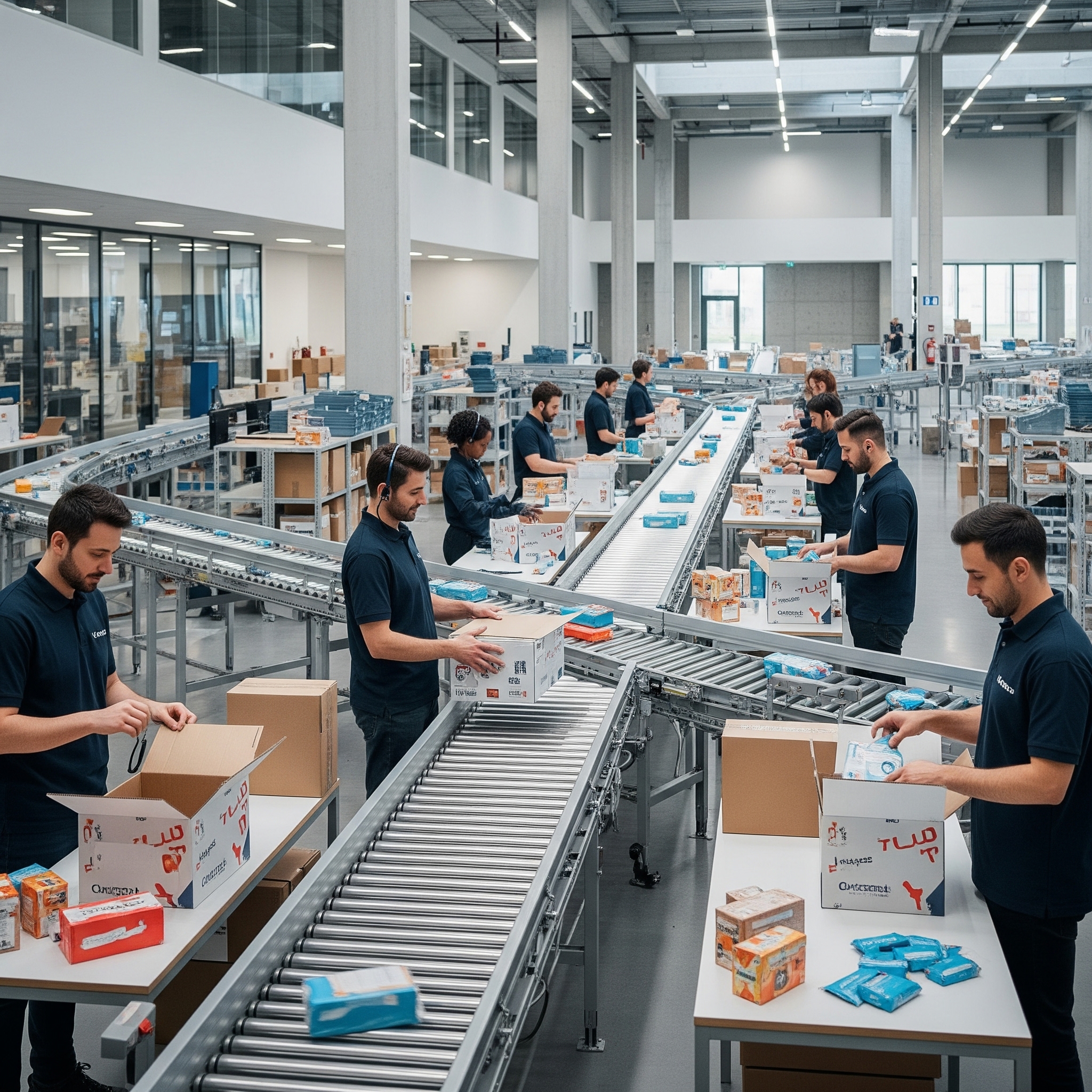
Blogs
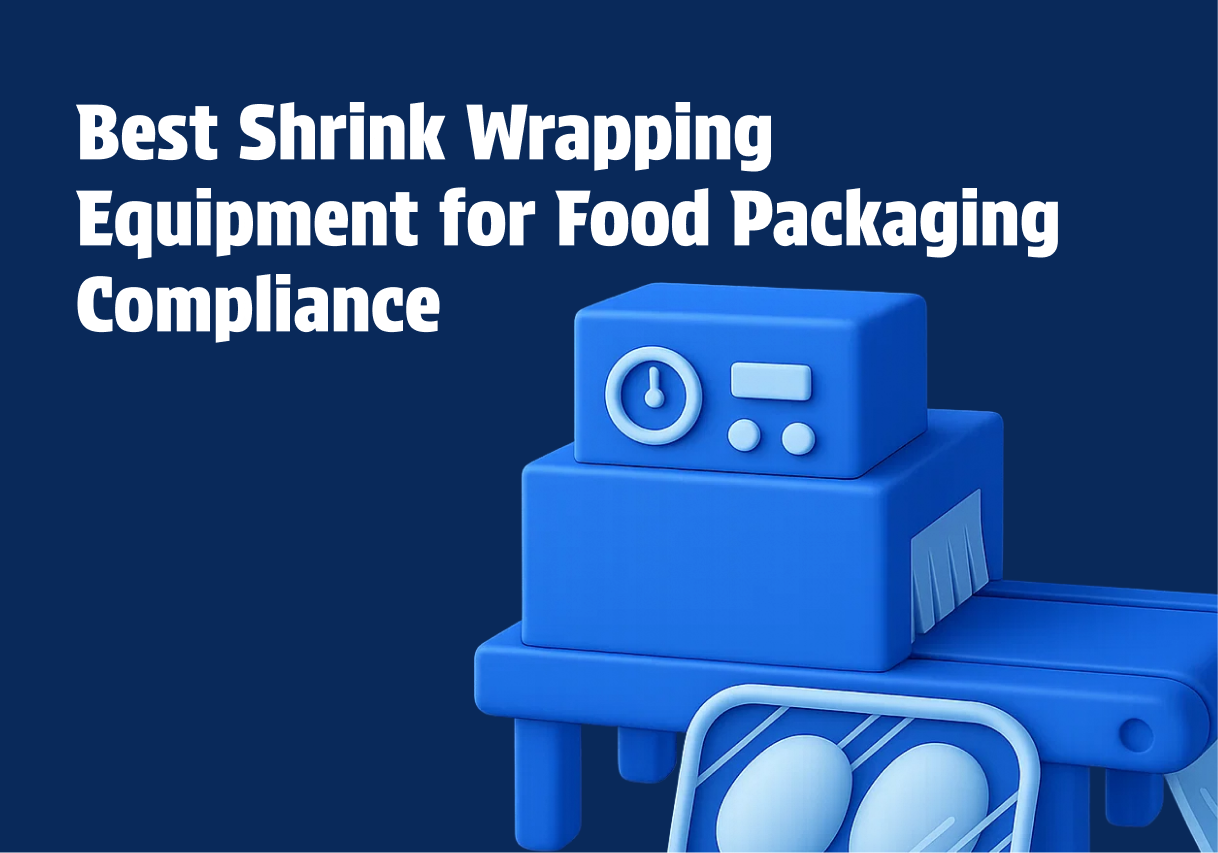
Best Shrink Wrap Machines for Your Business
Discover the best shrink wrapping equipment for food packaging compliance. Conflex offers high automation. Increase efficiency now!
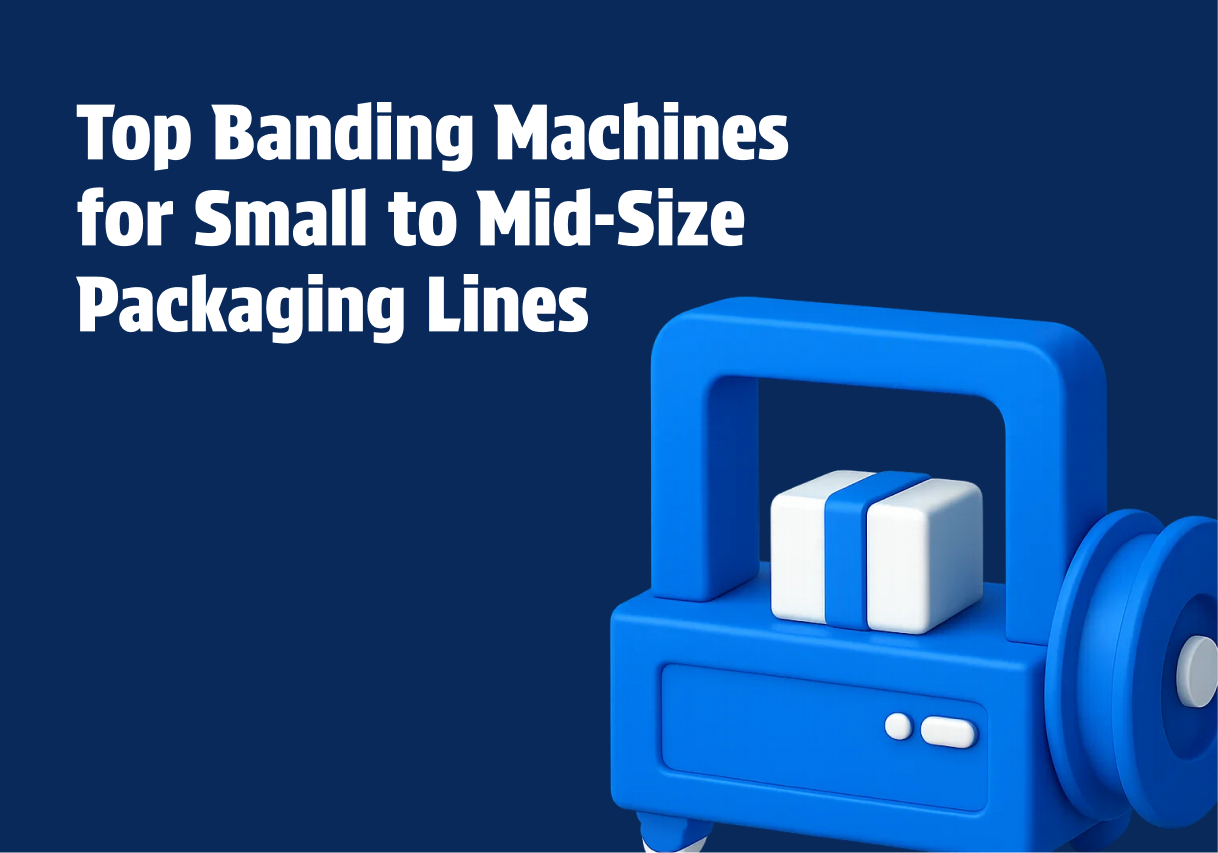
Top Banding Machines for Packaging Solutions
Find top banding machines for small to mid-size packaging lines! Discover flexible automation options and sustainability features. Optimize efficiency today!
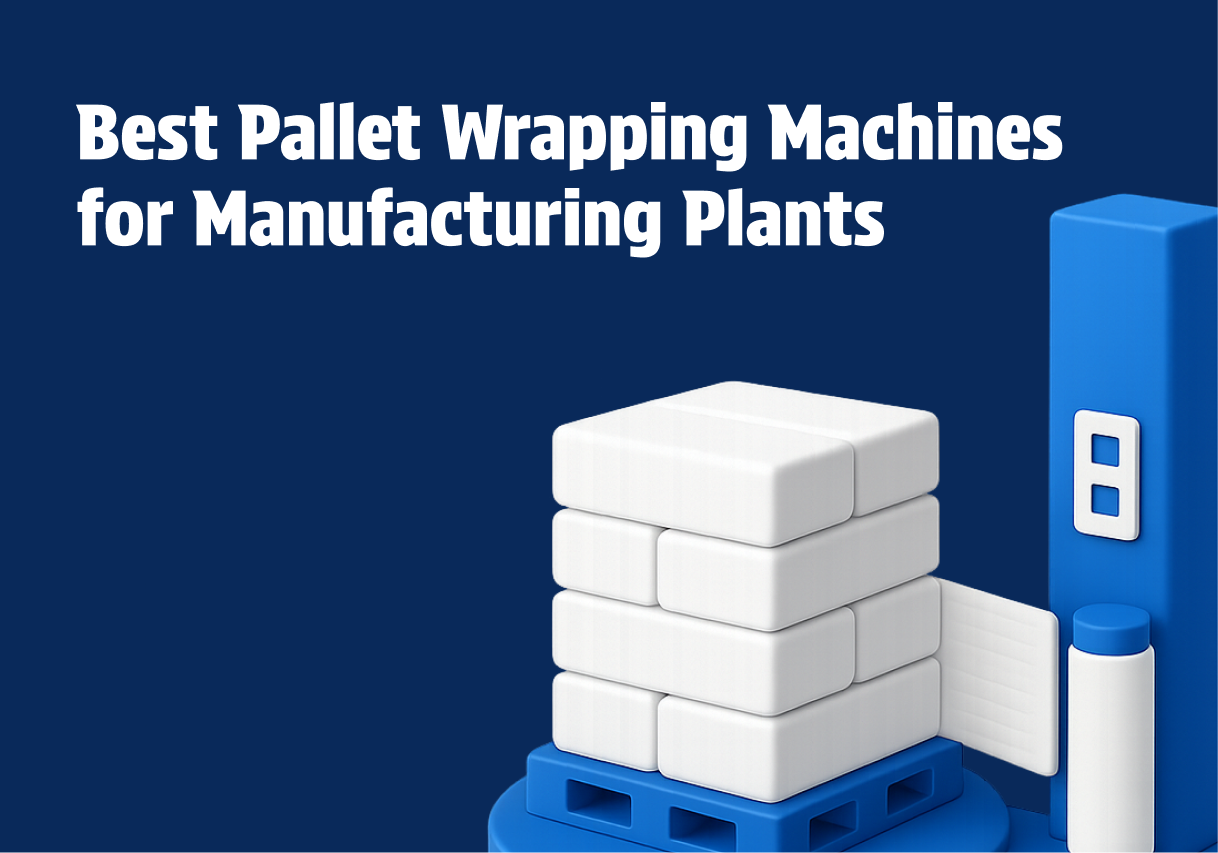
Best Pallet Wrapping Machines for Manufacturing Plants 2025
Explore the best pallet wrapping machines for manufacturing plants in 2025. Learn how to choose, compare key models, and reduce wrapping costs.